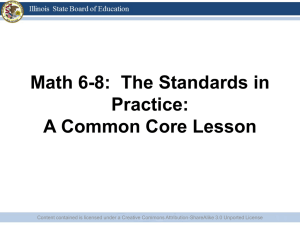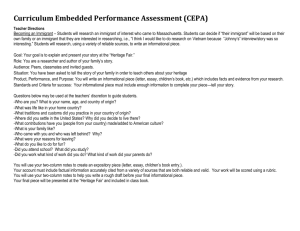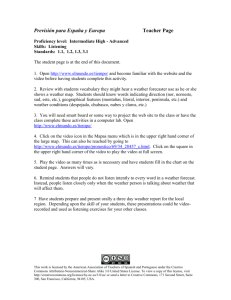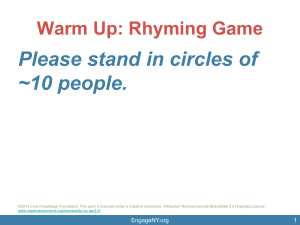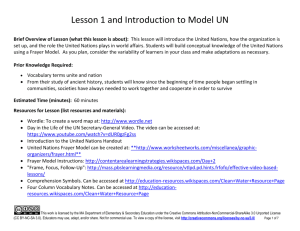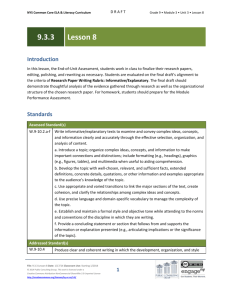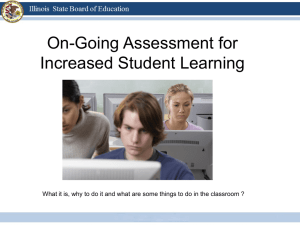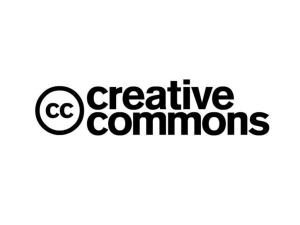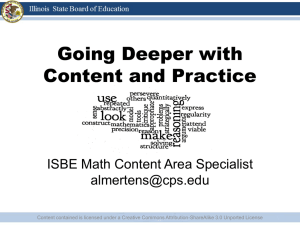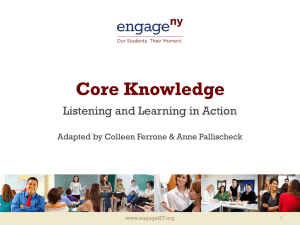Influences on and different approaches to curriculum design
advertisement
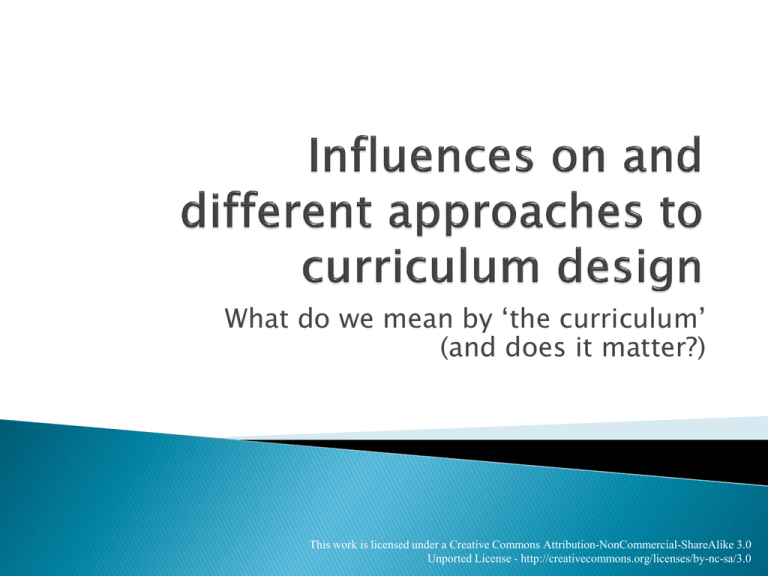
What do we mean by ‘the curriculum’ (and does it matter?) This work is licensed under a Creative Commons Attribution-NonCommercial-ShareAlike 3.0 Unported License - http://creativecommons.org/licenses/by-nc-sa/3.0 From QCA: ◦ “everything that promotes learners’ intellectual, personal, social and physical development. As well as lessons and extracurricular activities, it includes approaches to teaching, learning and assessment, the quality of relationships within school, and the values embodied in the way the school operates.” This work is licensed under a Creative Commons Attribution-NonCommercial-ShareAlike 3.0 Unported License - http://creativecommons.org/licenses/by-nc-sa/3.0 From Scotland (UWS): ◦ Instead of starting with the building blocks of a syllabus or discipline content, it suggests that we should begin by focussing upon the learner and how they learn. This approach turns the traditional curriculum design model on its head, and redefines curriculum as about process rather than product. This work is licensed under a Creative Commons Attribution-NonCommercial-ShareAlike 3.0 Unported License - http://creativecommons.org/licenses/by-nc-sa/3.0 From Singapore: ◦ If a curriculum is to be “a planned educational experience”, then curriculum design and implementation should follow a sequence of steps that operates like an upward and downward spiral with a robust feedback system for the adjustment of each step. ◦ See the 6 steps This work is licensed under a Creative Commons Attribution-NonCommercial-ShareAlike 3.0 Unported License - http://creativecommons.org/licenses/by-nc-sa/3.0 §4: Different levels? Prideaux, D. BMJ 2003;326:268-270 Copyright ©2003 BMJ Publishing Group Ltd. And is this the best approach? Prideaux, D. BMJ 2003;326:268-270 Copyright ©2003 BMJ Publishing Group Ltd. See definition provided by JISC but without the consideration of marketing: … It could be said to answer the questions ‘What needs to be learned?’, ‘What resources will this require?’, and 'How will this be assessed?' This work is licensed under a Creative Commons Attribution-NonCommercial-ShareAlike 3.0 Unported License - http://creativecommons.org/licenses/by-nc-sa/3.0 What do we take into consideration when we plan/design? What do we have to demonstrate in order to be approved (course/module documentation)? What should we have to demonstrate (e.g. is our existing documentation and procedures fully fit for purpose)? This work is licensed under a Creative Commons Attribution-NonCommercial-ShareAlike 3.0 Unported License - http://creativecommons.org/licenses/by-nc-sa/3.0 JISC project The eTutor project will explore the potential to develop and deliver education and training on-line using ubiquitous technologies, social networking and open source software, and freely available on-line resources. 2 modules developed and tested; full implementation was intended to follow Would this approach ‘work’ with our students? This work is licensed under a Creative Commons Attribution-NonCommercial-ShareAlike 3.0 Unported License - http://creativecommons.org/licenses/by-nc-sa/3.0 Do we need to ‘reinvent undergraduate education’? 1999 –Boyer Commission report 10 ways to change undergraduate education The capstone to culminate How influential has this been? This work is licensed under a Creative Commons Attribution-NonCommercial-ShareAlike 3.0 Unported License - http://creativecommons.org/licenses/by-nc-sa/3.0 2005 – in UK, Creation of CETLs ◦ ◦ ◦ ◦ Reinvention Centre (Warwick / Oxford Brookes) AURS (Reading) CILASS (Sheffield) CEEBL (Manchester) 2006 – HEFCE National Strategic Priorities for Teaching and Learning This work is licensed under a Creative Commons Attribution-NonCommercial-ShareAlike 3.0 Unported License - http://creativecommons.org/licenses/by-nc-sa/3.0 University of Lincoln: ◦ http://www.lincoln.ac.uk/cerd/uros.htm ◦ http://neo.lincoln.ac.uk This work is licensed under a Creative Commons Attribution-NonCommercial-ShareAlike 3.0 Unported License - http://creativecommons.org/licenses/by-nc-sa/3.0 This work is licensed under a Creative Commons Attribution-NonCommercial-ShareAlike 3.0 Unported License - http://creativecommons.org/licenses/by-nc-sa/3.0 Research and Teaching HEA: Research and Teaching ◦ http://www.heacademy.ac.uk/ourwork/research/te aching And a useful resource for students: ◦ Analyse this!! ◦ http://www.learnhigher.ac.uk/analysethis/ This work is licensed under a Creative Commons Attribution-NonCommercial-ShareAlike 3.0 Unported License - http://creativecommons.org/licenses/by-nc-sa/3.0 2. Different institutional perspectives Folllow the weblinks below and respond to the questions on the next slide. University of Manchester: Griffith University ◦ web pages from their Teaching and Learning Support Office ◦ Their ‘mandatory’ course (module) outline document MacQuarie University ◦ Introductory page from their Learning and Teaching Centre Dublin Institute of Technology ◦ The links below take you to 3 pages from an online article about work-based learning by Anne Murphy: The interface between academic knowledge and working knowledge. Implications for curriculum design and pedagogic practice ◦ http://level3.dit.ie/html/issue6/murphy/murphy_1.html ◦ http://level3.dit.ie/html/issue6/murphy/murphy_table2.htm ◦ http://level3.dit.ie/html/issue6/murphy/murphy_6.html#working This work is licensed under a Creative Commons Attribution-NonCommercial-ShareAlike 3.0 Unported License - http://creativecommons.org/licenses/by-nc-sa/3.0 Implications for inclusive curriculum What are the important differences? What are the implications of these differences? How do these different designs relate to your experience here at your own institution? Is there anything you think we could learn from any of these different approaches? Any other issues or questions you have about these different approaches? This work is licensed under a Creative Commons Attribution-NonCommercial-ShareAlike 3.0 Unported License - http://creativecommons.org/licenses/by-nc-sa/3.0
